




















































































 By Abby Wiedmeyer abby.w@dairystar.com
By Abby Wiedmeyer abby.w@dairystar.com
EVANSVILLE, Wis. –Justin Morton learned animal husbandry at a young age and knew he wanted to be the third generation to milk cows on his family’s farm. Now, he is learning new skills with the robotic milking system he and his family installed in November 2022.

“There have denitely been a few challenges starting up,” Morton said. “It’s a lot better now.”

Morton and his wife, Amanda, milk 122 cows near Evansville with two Lely Astronaut A5 robots. The system was installed in a retrotted freestall barn, which allowed the Morton family to add robots without a signicant amount of construction.

“I was just looking for the cheapest option to incorporate this,” Morton said. “It’s something we’ve been considering the last couple of years, and we nally took the leap.”

The Morton family welcomed guests to their farm
April 12 as part of a robotic tour hosted by Argall Dairy Systems. The tour also visited Kevin Makos’ farm near Argyle and the Voegeli family’s farm near Monticello.

Morton said he likes that he can walk from the driveway to the robot room without crossing through cow trafc. The maternity pen is in a separate building, and cows are walked down to the freestall barn after calving. There is a special needs area that consists of a few stalls and headlocks. Since there is no access to the robot from the special needs area, it is used on a temporary basis.
Manure is scraped with a skid loader twice a day. If most of the cows are already standing up, Morton will lock them to one side before scraping. However, if most are lying down, he scrapes past them, and they usually stay lying down and are not bothered by the interruption.
Typically, Morton scrapes the alleys rst thing in the morning, pushes up feed and then feeds calves.
The pellets in the robot provide the cows with 15%

of their daily protein needs. The other 85% is included in their total mixed ration. This is by design so that the fetch cows who do not visit the ro-


bot as often are not getting deprived of their daily nutritional needs.
The technology involved with the robots has been both
the biggest help and the biggest lesson, Morton said. Even though there was a lot to learn, he said he appreciates the information that is available about the health of each cow.
“There are a lot of good tools there,” Morton said. “With your monthly DHIA, you only get a snapshot of one day versus pulling up information right now and seeing what she’s been doing.”

The information has also been helpful when the need to call a vet arises and a problem can be narrowed down faster because so much information is available immediately.


Amanda has had an easier time learning the technology behind the robots and manages the data entry in between working as a nurse. She said it is helpful to be able to access everything from her phone so she can help whether she is home or not. If Morton has information to enter, he asks Amanda to take care of it, and if Amanda sees a cow agged on a report, she will alert him.
The robotic system has been instrumental in helping the family juggle Amanda’s off-farm job with taking care of their three children and the farm. Since Amanda is often



 By Jan Lefebvre jan.l@star-pub.com
By Jan Lefebvre jan.l@star-pub.com


BLOOMINGTON, Minn. – In what organizers call a boots-on-theground event, this year’s Precision Dairy Conference will include panels of dairy producers who will share how technology has affected their bottom line.

The conference, taking place June 20-21 at the Hyatt Recency in Bloomington, will also include presentations by industry leaders, student researchers and startup companies. Time has been set aside throughout the conference for discussions and questions.


The conference is focused on partnering with technology to improve dairy farm protability and sustainability. The event is hosted by the University of Minnesota Extension and College of Food, Agricultural and Natural Resource Sciences.

Marcia Endres, dairy science professor and extension specialist at the University of Minnesota, is the conference organizer.
“One thing that makes this conference unique is the fact that it really focuses on the farm and what technology can do to improve protability and sustainability,” Endres said. “We also have a lot of opportunity for networking.”
Each main session will run about 90 minutes. An industry leader will speak for about 20 minutes, followed by a sponsor for 10 minutes. The next 30 minutes will include a panel of two or three producers. They will share their experiences working with technologies on their farms. The last 30 minutes of each session will be devoted to discussion.
The topics for the main sessions are animal health and welfare, environmental sustainability, labor challenges and data integration.
“The producer panels will be cool because they get to tell us how things work for them,” Endres said. “The audience can benet quite a bit from (the sessions), but they can also help the companies and consultants who are in the room to see what is needed.”
Endres also said the platinum sponsors share something that will help producers as opposed to making

a sales pitch.
“The idea is that we are here in a neutral space,” Endres said. “We are not a company and will be respectful of everyone’s ideas and experiences, and it’s not about commercializing any specic thing.”
Endres said the structure works well.
“We rst had this format in 2021, and it was really well received by the audience because of this opportunity to interact and not only ask questions but share their own experiences,” Endres said.
The Precision Dairy Conference was launched 10 years ago and is offered biennially. Attendees come from all over the country and even the world, but most are residents of Minnesota or nearby states.

The rst conferences, Endres said, were mostly scientic with researchers presenting abstracts in addition to the industry leader talks and some producer panels. Later, as the boots-on-the-ground approach was being implemented, fewer graduate students presented as more producer panels and short talks by industry leaders were added. This year’s con-
ference will include a startup spotlight session where nine new companies will talk about their product and what is coming in the future.


Endres said there are not a lot of conferences as specic to one topic like the Precision Dairy Conference. However, the conference addresses a topic growing in scope and importance.

“Years ago, when we rst started doing research with robotic milking, a majority of our collaborator farms were smaller,” Endres said. “The reason they were using robots was because of family and lifestyle. They didn’t want to be tied down to milking cows twice a day.”
She said more larger dairies are getting into robotics today, mainly for labor issues. She also said technologies can help smaller dairies bring their farms into the next generation.
“As technologies get more foolproof, more people will be adopting them,” Endres said. “There will always be a learning curve. Everybody says it takes a while to get things adjusted, but I don’t see technology going away, especially with the labor challenges we are facing. If anything, it will get adopted at a higher rate.”
Tiffany Klaphake contributed to this article.
gone to work early in the morning, Morton is able to get the kids up and off to school and day care before starting chores.
“Flexibility is huge,” Morton said. “If you’ve got something going on at your old chore time, you can push it forward or back, and you’re still able to do it.”



Now that the robots have been in action for about six months, there is one lesson that is becoming clear; the fewer cows they are moving through the system, the more milk each cow produces per



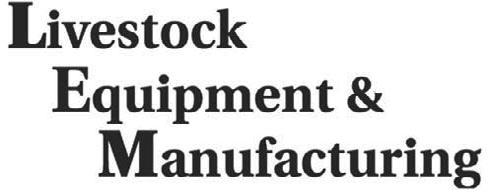




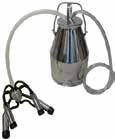









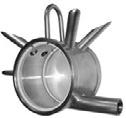

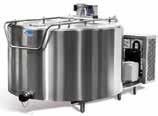



day. When installing the robotic system, the Mortons originally went from 165 cows milking 78 pounds per day in the parlor to 135 cows moving through the robot. Within a few months of using the new system, the cows had increased their production to 83 pounds per day.




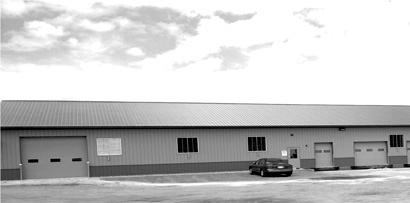
Morton still felt like he was missing prot and decided to decrease cow numbers again to get closer to the recommended herd size for two robots. They are now milking 122 cows and averaging 88 pounds of milk per day. They managed to downsize by implementing stricter culling parameters. They went through herd-health data and eliminated all of the do-not-breed animals.
Decreasing the milking herd numbers led to an evaluation of their heifer inventory as well. Once they considered how many fewer animals they would need for replacements, the discussion of selling heifers began. Decreasing youngstock would increase the amount of resources for space and feed per animal and hopefully allow them to grow better, sooner.
“It’s challenging, but once we got in that low 120 mark for milk cows, they really shot up in milk,” Morton said. “You always think milking more cows is the answer, but there’s something to milking less.”
“It’s challenging, but once we got in that low 120 mark for milk cows, they really shot up in milk. You always think milking more cows is the answer, but there’s something to milking less.”
JUSTIN MORTON, DAIRY FARMER






WAUKESHA, Wis. – The team at Gwenyn Hill Farm takes a holistic approach to farming. Focused not only on the health of crops and livestock, the farm also concentrates on the health of soil, woodlands, water and wildlife. It is this thought process that has led to an extended grazing season for the farm’s herd of dairy cows. Last year, cows grazed into December for a total of 210 days.
“My goal is to graze as much as I can,” said Ryan Heinen, land and livestock manager at Gwenyn Hill Farm. “It’s the best thing for the land, and it’s where we can make money. Longer grazing equals less cost. We’re hoping to move to an all-grass-fed operation, but we’re not there yet.”
This dairy is part of a unique entity, with each component intertwined on an operation designed to be sustainable. Every product produced on the 430-acre farm is certied organic. In addition to milking 80 cows, staff at Gwenyn Hill Farm also care for registered Devon cows, Cotswold sheep, chickens and Belgian draft horses that sometimes get put to work in the eld. A beekeeper can also be found on the farm, tending to the insect from which the farm’s name is derived – as the word Gwenyn is Welch for honeybee.
The farm’s old stone milkhouse was transformed into a store that offers grass-fed beef and lamb, fresh seasonal produce, our made from heritage grains, eggs, butter, cottage cheese, wool, honey and more. The self-serve store is open 9 a.m. to 7 p.m. Tuesday through Sunday in the summer. The farm also features
a you-pick ower patch and apple orchard.
“We grow every vegetable you can think of,” Heinen said.




Through the farm’s Community Supported Agriculture program, members receive weekly shares of certied organic produce and invitations to exclusive events.


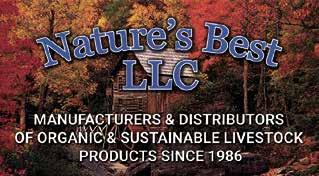
In addition to managing crops and livestock, Heinen oversees 80 acres of woods that he is working to restore to an oak savanna. As stewards of the land, the folks at Gwenyn Hill Farm are practicing regenerative agriculture to maintain the biodiversity of the farm’s elds and woodlands.
Previously owned by the Williams family who milked cows until 1988, new owners saved the farm from becoming a 140-house development about seven years ago. They bought the special piece of countryside with the mission of preserving the property and making it organic while producing food to feed the local community.
“We’re offering more than commodities,” Heinen said. “We also provide education and training opportunities for new and established farmers. We want to give people an opportunity to try new methods of farming.”

Heinen has a bachelor’s degree in eld ecology and wildlife management and also participated in the dairy grazing apprenticeship program. In addition, Heinen served as assistant preserve manager on the 8,000-acre Ordway Prairie in South Dakota, which grazed bison and beef cattle.
“I saw how important grazing is to grasslands and decided to pursue being a grazing-based farmer,” Heinen said.



When Heinen, a central Minnesota native, came to Gwenyn Hill Farm ve years ago, the farm was in the process of transitioning to organic, and there were no

livestock yet on the premises.
The Devon cattle were the rst animals to arrive. Because no organic milk contracts were available at the time, Heinen said the farm offered custom grazing for dairy heifers in an attempt to get more livestock on the elds. After a couple years, the owner of those cattle wanted to retire, so Gwenyn Hill Farm bought the herd of 100 organic cows and took over the milk contract.
The herd was a three-way cross of Holstein, Normande and Jersey. Since then, Heinen has transitioned to breeding more Jersey and Normande. The farm calves seasonally with half of the animals calving in spring and the other half in fall. Each calving period lasts two months. Calves born during the rst month have A.I. sires, while calves born the second month are sired by the farm’s Devon bull.
“Our cows last a long time, so we don’t need all those replacements,” Heinen said. “We also have good demand for bull beef calves and heifer beef crosses.”


Calf raising at Gwenyn Hill Farm is a hands-off activity as calves are raised on their mother.
“They stay on at least 6 months, and they look awesome,” Heinen said. “They never get sick, and we have no problems with scours or respiratory issues. We’re trying to make the optimal grazing animals, and this helps because calves learn how to graze from
a young age. Also, not having to feed calves is a huge benet.”
Cows are moved to a fresh piece of pasture every 12 hours – after each milking. The farm’s elds contain a large mix of grasses including meadow fescue, tall fescue, orchard grass, brome, alfalfa, clover, chicory, plantain with birdsfoot, trefoil and dandelions.
“Nothing is a single stand,” Heinen said.
Cows are milked twice a day in a swing-12 parlor Heinen helped build in the farm’s 44-stall stanchion barn. Since starting on pasture in the beginning of May, cows are up 1,000 pounds of milk per day.

“They’re milking really well eating all pasture right now, plus 8 to 10 pounds of grain,” Heinen said.
Typically, 75% of the cows’ diet is pasture, and the remainder is hay and grain.

“We’re always lacking energy, but I don’t want to feed a lot of grain,” Heinen said. “We’re working to get hay better and offer more digestible forages. We make really good baleage.”
Heinen grazes hay elds after two cuttings as well as cover crops and sorghum sudan. Cover crops include a mix of oat, pea, radish and turnip.
“We’re trying to have a cover crop be an actual crop, so we plant winter grains like wheat and rye as new seedings in the fall as well,” Heinen said.
Quality holds in the hay elds, Heinen said, and he likes that the cattle can act as fertil-

Cows graze May 16 at Gwenyn Hill Farm, an organic farm near Waukesha, Wisconsin. Rescued from development, the farm was purchased seven years ago by new owners who transi oned it to organic.
izer.
“Most of this farm, which has steep slopes and hills, was row cropped in history and is now badly eroded,” Heinen said. “It doesn’t make sense to waste diesel and drive over it when the cows can get the feed for free. Hopefully, that will make the hilltops better over time.”
Heinen is hoping to make more hay as they get the farm’s elds back in shape.
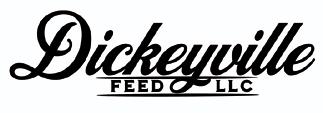
“For now, sending the eld through the cows as grass is much better,” he said.
All permanent pastures have water supplied by shallow buried lines. In the winter, cows reside on an outdoor bedded pack.
“When you’re organic,
you don’t have to milk huge amounts of cows to make a living,” Heinen said. “As long as you have a good rotation, we don’t have trouble with crops and weeds either. The water is cleaner coming off our soil, and the soil is not eroding anymore. I like seeing grassland birds coming back to the farm.”
Josh Mechaelsen, land and livestock assistant at Gwenyn Hill Farm, is Heinen’s righthand man.
“Both of us are in this not just to make milk but also to grow grass and build soil,” Mechaelsen said. “We’re treating the farm as a system, and the soil is a big part of that, and dairy is a big part of the soil – it all feeds into each other.”
Future goals for the dairy
include becoming 100% grassfed and improving the performance and genetics of the herd while also building more productive soil and pasture. Heinen also hopes to nudge milk production higher as time goes on. Farming in a way he believes nature intended, Heinen nds value in conserving the farm’s resources.
“There needs to be more farmers who are conservationists,” Heinen said. “I’m probably considered a conservationist who farms. I don’t feel the need to separate the two. Conservation can happen on the same farm and the same eld. I like to do what works best with the land instead of trying to t the land into other plans.”

CME cheese prices continued to fall the third week of May as traders anticipated the April milk production report Friday afternoon. Cheddar block fell to $1.47 per pound Monday, lowest price since June 9, 2021, climbed back to $1.54 on Wednesday but closed Friday at $1.5350, up a half-cent on the week, ending seven weeks of decline, but is 84.50 cents below a year ago.
The barrels fell to $1.4425 Thursday, lowest since Sept. 7, 2021, but rallied to a Friday nish at $1.47, 2 cents lower on the week, 87.75 cents below a year ago and 6.50 cents below the blocks. Sales totaled 35 cars of block and 54 of barrel.
Cheese demand varies and the type of customer is part in the equation, said Dairy Market News. Cheesemakers who supply regional chain and individually owned restauranteurs say ination has put pressure on those businesses. Retail cheesemakers are reporting generally steady demand, in some cases year-over-year improvements. Milk availability is a growing concern, particularly for handlers. Spot milk prices remain at previous levels, as low as $11 under Class at mid-week, compared to $2.50 under Class to 75 cents over a year ago.
Retail and food service cheese demand remains strong to steady in the west. Export demand is mixed. Some contacts indicate good demand from Asia, Mexico and South America, while others indicate lighter demand. Plentiful milk is keeping cheese production strong to steady, said DMN.
Cash butter closed Friday at $2.46 per pound, up 6 cents on the week but 39 cents below a year ago, with nine sales put on the board this week.
Butter plants report atypical demand upticks as year-over-year reports are showing improvements in retail. Food service orders are seasonally in line to quieter. Cream is available for churning and multiples are at similar levels to previous weeks. Some are turning cream away, as they are at or near capacity.
Western cream is plentiful but cream multiples moved higher this week. Planned equipment maintenance in June caused a few butter plants to reduce their cream intake. Some report output is limited due to personnel shortages. Retail and food service butter demand is strong to steady and export demand is
steady.
Grade A nonfat dry milk fell to $1.1525 per pound Thursday and stayed there Friday, lowest since April 18, 1.75 cents lower on the week, and 64.75 cents below a year ago, with nine sales reported.
Dry whey closed 3.75 cents lower on the week, at 26.50 cents per pound, lowest price since March 13, 2018, the second day that whey started trading at the CME, and is 24.25 cents below a year ago. Seventyve loads were sold on the week, highest weekly total since the week of Sept. 30, 2019.
The U.S. Department of Agriculture lowered its 2023 milk production estimate in its latest World Agricultural Supply and Demand Estimates report, citing a larger expected cow inventory but slower output per cow. The report also gave a look at 2034. 2023 production and marketings were estimated at 228.6 and 227.6 billion pounds, respectively, down 100 million pounds on production from a month ago, but unchanged on marketings. If realized, 2023 production would be up 2.1 billion pounds, or 0.93%, from 2022.
2024 production and marketings were estimated at 230.8 and 229.8 billion pounds, respectively, up 2.2 billion pounds on both from 2023. If realized, 2024 production would be up 0.96% from 2023 and marketings would be up 0.97%.
Based on expected changes in component prices, 2023 Class III milk prices were lowered while Class IV prices were raised. The Class III average was projected at $17.75 per hundredweight, down 50 cents from last month’s estimate, and compares to $21.96 in 2022 and $17.08 in 2021. The 2024 average was projected at $17.50.
The 2023 Class IV average was estimated at $18.30, up 20 cents from a month ago, and compares to $24.47 in 2022 and $16.09 in 2021. The 2024 average is projected at $17.35.
The 2024 milk estimate was driven by gains in milk per cow and an additional milking day, according to the WASDE. The Class III price was forecast lower on weaker whey prices. The Class IV was forecast lower as well, with prices for butter and nonfat dry milk projected lower.
This month’s corn outlook is for larger production, greater domestic use and exports, and higher ending
By Lee Mielke

stocks. The corn crop was projected at a record 15.3 billion bushels, up more than 10% from last year on increases to both area and yield. The yield projection is 181.5 bushels per acre. With beginning stocks up slightly, total corn supplies were forecast at 16.7 billion bushels, the highest since 2017-18, according to the WASDE. Total U.S. corn use was forecast to rise about 5% relative to a year ago on higher domestic use and exports.



Corn exports were forecast to rise 325 million bushels to 2.1 billion, as lower prices support a sharp increase in global trade following the decline seen during 2022-23. The season-average farm price was projected at $4.80 per bushel, down $1.80 from 202223.
The soybean outlook is for higher supplies, crush, ending stocks and lower exports. The soybean crop was projected at 4.51 billion bushels, up 5% from last year mainly on higher yields. With lower beginning stocks partly offsetting increased production, soybean supplies were forecast at 4.75 billion bushels, up 4%. The season-average soybean price was forecast at $12.10 per bushel compared with $14.20 in 202223. Soybean meal was forecast at $365 per short ton, down $90.
Meanwhile, U.S. corn planting was at 65%, as of the week ending May 14, according to the USDA’s latest Crop Progress report. That’s up from 49% the previous week, 20% ahead of a year ago and 6% ahead of the ve-year average. 30% was emerged, up from 12% the previous week, 17% ahead of the previous year and 5% ahead of the ve-year average.
Soybeans were at 49% planted, up from 35% the week before, 22% ahead of a year ago and 13% ahead of the ve-year average. 20% are emerged, 12% ahead of a year ago and 9% ahead of the ve-year average.
The week ending May 6 saw 57,100 dairy cows head to slaughter, down 1,700 from the previous week but 800 head, or 1.4%, more than a year ago. Year-todate, 1.17 million head have been culled, up 51,300, or 4.5%, above a year ago.
Checking demand, March butter disappearance totaled 219.5 million pounds, up 19.4% from February and 15.2% above March 2022. HighGround Dairy
credits “substantial domestic demand, possibly due to an earlier Easter in 2023.” The butter was a “beacon of hope,” said HGD contributing dairy economist Betty Berning in the May 22 Dairy Radio Now broadcast.
Cheese totaled 1.23 billion pounds, down 1.7% from February and down 2.2% from a year ago. Both domestic use and exports were lower, falling 2.4% domestically and 0.4% on exports. American cheese exports plummeted 12% annually, and year-to-date were at a decit of 4.3% to the same period in 2022.
Nonfat dry milk-skim milk powder utilization totaled 238.5 million pounds, up 25.1% from February and 1.4% ahead of a year ago. HGD credited an uptick in domestic usage, which was up 13.7%, while exports declined 2.7% from 2022.
Dry whey totaled 79.7 million pounds, up 8.1% from February and 11.8% ahead of a year ago. Domestic usage, at 32.8 million pounds, was up 17.1% from a year ago, and exports, at 46.9 million, were up 8.3%.
Fluid milk sales looked a little better in March but were still down from a year ago. The latest data shows packaged uid sales totaled 3.8 billion pounds, down just 0.7% from March 2022, following a 3.2% drop in February.
Conventional product sales totaled 3.5 billion pounds, down 0.9% from a year ago. Organic products, at 256 million pounds, were up 1.3%, and represented 6.8% of total sales for the month.
Whole milk sales totaled 1.3 billion pounds, up 2.1% from a year ago, up 1.1% year-to-date and represented 34.3% of total milk sales for the three months.
Skim milk sales, at 192 million pounds, were down 6.2% from a year ago and down 6.8% year-todate.
Total packaged uid sales for the three months amounted to 10.9 billion pounds, down 1.4% from 2022. Conventional product sales totaled 10.2 billion pounds, down 1.6%. Organic products, at 732 million pounds, were up 1.1%, and represented 6.7% of total milk sales for the period.
The USDA announced the June federal order Class I base milk price at $18.01 per hundredweight, down $1.56 from May, $7.86 below June 2022 and the lowest Class I since November 2021. It equates to $1.55 per gallon, down from $2.22 a year ago. The six-month average stands at $19.77, down from $23.32 a year ago and compares to $16.13 in 2021.
Global Dairy Trade reversed two events of gain this week, as the GDT’s weighted average slipped 0.9%, following gains of 2.5% May 2 and 3.2% April 18. Traders brought 47.5 million pounds of product to market, down from 51.3 million May 2 and the lowest since June 21, 2022. The average metric ton price slipped to $3,488, down from $3,506 May 2.
Anhydrous milk fat led the declines, down 4.5%, after losing 2.4% May 2. Butter, on the other hand, was up 2.2%, following a 2.4% advance. Cheddar showed the second biggest decline, down 3.4%, after rising 4.5% last time. Skim milk powder was down 1.6%, after rising 1.5%, and whole milk powder was up 0.3% following a 5% gain May 2.
StoneX said the GDT 80% butterfat butter price equates to $2.2430 per pound, up 5.4 cents after gaining 5.6 cents May 2, and compares to Friday’s CME butter at $2.46. GDT cheddar, at $1.9991, was down 7 cents, and compares to Friday’s CME block cheddar at $1.5350. GDT skim milk powder averaged $1.2547 per pound, down from $1.2641, and whole milk powder averaged $1.4715 per pound, up from $1.4650. CME powder closed at $1.1525.
Dairy margins deteriorated over the rst half of May, particularly in nearby periods, as a sharp decline in milk prices more than offset steady to weaker projected feed costs, according to the latest Margin Watch from Chicago-based Commodity and Ingredient Hedging LLC.
“Spot trade in cheese and whey has been at a deep discount to indicative Class III milk futures which have adjusted lower as the cash market has failed to recover,” the MW reported. “Whey prices have dropped from almost 87 cents per pound early last year as increased production is forcing more trade to clear at the CME. Since the beginning of April, 229 loads have traded in the spot market. While exports have held up, weaker hog margins in China are causing a recent slowdown in demand which will force more product to clear domestically.
“Exports of other dairy products during March were impressive as well, with 91.6 million pounds of cheese and curd exports which represented the second-highest March total on record, although total rst-quarter cheese exports were record high and rst quarter NDM exports were the second highest on record.
“Unfortunately, lower prices may need to be maintained to move additional product through export channels as competition increases, particularly to Asia. Another problem for dairy producers is that ongoing issues with labor, freight and maintenance are reducing the capacity of dairy processors. Cooperatives and milk handlers have been forced to either dump or sell spot milk at deep discounts, with producers receiving pricing of $4 to $12 per cwt below class for milk exceeding contracted volumes.”
Cooperatives Working Together members accepted 11 offers of export assistance this week on sales of 1.3 million pounds of American-type cheese, 44,000 pounds of butter and 154,000 pounds of cream cheese. The product is going to customers in Asia, Central America, the Caribbean, Middle EastNorth Africa, Oceania and South America through November.
In politics, the International Dairy Foods Association reports that the Wall Street Journal says, “Top ofcials with the USDA remain xated on banning chocolate milk from elementary and middle school cafeterias despite widespread opposition from
parents, school meal professionals and the federal government’s own Dietary Guidelines for Americans report.”
In April, 37 school milk processors representing more than 90% of the school milk volume in the U.S. jumped ahead of USDA’s proposed guidelines with the Healthy School Milk Commitment, a pledge to offer nutritious school milk options with no more than 10 grams of added sugar per 8-uid-ounce serving by the 2025-26 school year.
The Journal reports that “the issue has divided parents.” However, neither the Journal article nor USDA’s comments in the Journal feature thoughts from parents of school-aged children. In a Morning Consult poll of more than 500 parents with children in public schools conducted March 17-19, 90% of parents expressed agreement that non-fat or lowfat avored milk should remain an option in public school meals. In October 2022, a similar poll found support among parents for low-fat avored milk to be 84%, meaning support among voting parents with children in public schools continues to increase, said IDFA.
4 fresh 3yr old tiestall cows milking 85-105 lbs! 6 tiestall cows from overstocked herd, mostly bred back and milking well. 7 springing Holstein heifers, 3 hol hfrs bred 3-4 months. EXPECTING OUR USUAL RUN 250-350 HEAD.
Thursday, June 8th
Complete herd dispersal
40 Holstein tiestall cows. Herd is averaging 72 lbs milk, 3.8F, 3.2P, scc mostly under 100. All stages of lactation, not pushed for production. Some nice young cows!!
Early Consignments:
5 virgin black Angus Bulls 14 months old, 2 yr old proven Angus bull, 3 yr old Angus bull, proven. These 7 Bulls are out of many years of top Breeding, outstanding quality!! Larry Hansen, Turtle Lake. 15 month old Simmental x Red Angus stout, well made bull ready to work! Purebred 2 yr old Maine Anjou bull. Registered, proven and halter broke! 2 fancy Jersey bulls
ADVANCE NOTICE
Tuesday, July 11th (Loyal yard)
Accepting all classes of farm, construction and recreational items. Anticipating another large auction, get your items consigned early to maximize the exposure of advertisement of your machinery. This will be a live auction with larger items being on HiBid and Equipment facts

Formerly Turenne Livestock
SALE EVERY MONDAY AND WEDNESDAY 5:00 PM
Selling Baby Calves, Hogs, Sheep, Goats, Feeder Cattle, Fat Cattle, Market Cows and Bulls
VERY COMPETITIVE MARKET PRICES

Call 712-432-5500 for daily market report
Ben King, Darlington. $2,600, $2,200 Elmer Yoder, Milladore. $2,150 Dale Brueggen, Arpin. 70% of dairy cows sold $1,450-2,200. Springing Holstein heifers $1500-2000 NT. Opens $1.05-1.20 NT. Jersey open heifers $1.101.35/lb. Single birth Holstein heifer calves $25-75/head. Breeding Bulls $1,575-2,200. Market Bulls up to $113.50. Choice Holstein steers $145-154. 3 head $160-166. Beef cross up to $166. Holstein feeder steers package 868 lbs @ $140. Angus hfrs 574 lbs @ $192. Crossbred bull 470 lbs @ $210. Holstein bull calves $145-265, top $270 consigned by Michael Zimmerman, Neillsville. Beef cross calves mostly $350-465.
20% of Market cows sold $109-119, top 1790 lb Holstein at $124. 50% sold $85-108. 7 nanny goats 89 lbs @ $160/hd No test on hay sale today.
Thank you for your continued patronage!


Planting progress has gone reasonably well with corn 65% planted as of May 14th, soybeans 50%, and spring wheat 20%. This week corn planting progress dropped below the 7-year average planting pace as some of the remaining regions not yet planted struggle with excessive rains and wet cool conditions.
U.S. dairy markets have not been fun to watch lately. Spot cheese trade in the mid $1.40 to low $1.50’s is projecting a June Class III settlement near $14.50. That one will make the bankers pucker! Trade volumes in the spot session have been up significantly. The week ending May 19 saw 35 blocks, 54 barrels, and 75 whey loads trade.
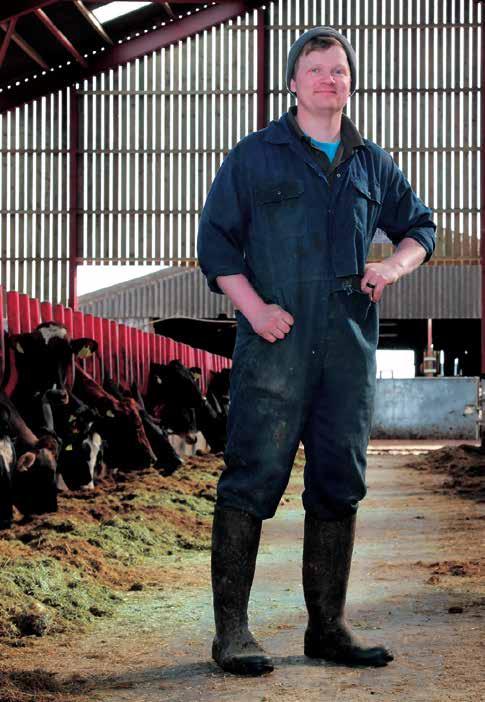
Heavy whey offerings this past month are likely coming from high protein whey production being shifted to sweet whey. It appears this is being done so the liquid spot market can be used to get rid of it. With make allowances up, it is likely that the recent 26 cent whey price will not be profitable for plants. Look for significant pay price hits to come from other solids.

Butter prices are holding up well relative to EU and NZ. Spot prices have been trading in the mid $2.40’s with EU $2.32 and NZ $2.27. Consumer spending remains active with restaurants. My understanding is that over



half of the U.S. butter produced goes to this demand sector. As long as consumers continue to take their credit cards to the closest dining table, butter prices should remain supported. With talk of a consumer spending pull back in the news daily, it is likely that butter prices could be challenged at some point in 2023. Butter exports are slowing due to price competitiveness issues. First quarter sales were 10-28% below the strong 2022 pace but remain near 2021 levels.
Corn and soybean prices have seen aggressive sell pressure from managed funds. Open interest has increased with prices declining as this trader group adds new shorts to their position. This brings back nightmares of my old cattle trading days where the outside speculative forces buried true hedge trading activity leading to some extremely volatile basis moves from one month to the next. If this short hedging force remains active, look for old crop corn and soybean basis to remain extremely strong and volatile. Slow farmer sales and short bought processor demand will have to haggle the cash price with a growing disregard to board moves.







When my editor asked if I had time to spend a few hours picking rocks at Jerry Pohlmann’s farm, my immediate response revealed that I had no clue about what I was getting myself into: “Sounds like fun.”
I had the luxury of growing up with supple palms in the suburbs of Houston, Texas. Having moved to Minnesota in late April, this was my rst opportunity to experience the annual tradition enjoyed by farmers throughout the Midwest each spring known as rock picking.
 By Hans Lammeman Staff writer
By Hans Lammeman Staff writer
Brad Herkenhoff (le�) and Tony Roggenbuck show their rockpicking talents May 22 at Jerry Pohlmann’s farm near Grey Eagle, Minnesota. Both are employees of Magni Financial, which co-sponsored the rock pickers for a day contest.

Just over a dozen of us gathered around Pohlmann’s truck as he laid out the plan of attack for scouring 50 acres for stones larger than softballs. In addition to the Pohlmanns present, the group consisted of several farm-

raised volunteers from Magni Financial and a few of my coworkers at Star Publications.
Pohlmann’s advice was somehow both vague and clear at the same time: “It’s not that hard to gure out;
just keep moving and keep picking until you’re sick of it.”
TRACTORS
‘13 MF 8670, FWA, w/1,699 hrs. 2013 ................... $164,000 Massey Ferguson 20C Industrial, gas, 2WD w/loader & bucket ......................................................... $7,200

COMBINES & HEADS
‘21 Gleaner S97 Combine, duals, 768 Sep, 1,050 E. Hrs ...................................................... Coming In
‘10 Gleaner R76 Combine, duals, 1787 Sep, 2751 E. Hrs CDF Rotor....................................... $86,000
‘05 Gleaner R75 Combine, Duals, 2,204 Sep, 3,133 E. Hrs ........................................................ $54,000
Gleaner 3000 /Challenger Ch630 6R30” Corn Head, Single Point......................................................... $18,000
‘10 Gleaner 9250-35 Draper Head....................... $37,000
‘09 Gleaner 8200-35 Flex Head w/Orbit Reel ...... $18,000
Gleaner 8200-35 Flex Head w/Crary Air Reel... Coming In Gleaner 8200-30 Flex Head With Crary Air ReelComing In
‘05 Harvestec 4306C 6 Row 30” Cutter Corn Head, Gleaner Mounts .................................................. $17,500
‘00 Geringhoff Rd630 Corn Head,Consigned, Gleaner Mounts .................................................. $14,000
Gleaner 313 Pick-Up Header .................................. $3,500
SKIDS, TRACK LOADERS, TELE-HANDLERS, & EXCAVATORS

‘07 Bobcat S185, Cab, 5242 Hrs ...................... Coming In


‘14 Bobcat S570, Cab, w/5,100 hrs, H/F ctrl,
2 Sp ................................................................... Coming In
‘15 Bobcat S590, 2330 hrs, Single Speed ....... Coming In
‘16 Bobcat T770 Track Loader, Cab Hvac, 3,000 Hrs, H/F Controls, Track Sus...................................... $45,000
Mustang 2032, 3000 hrs, 1-Owner,
‘12 MF 1372 Disc Mower.................................. Coming In NH BR7060 4x5 Round Baler, Twine Only, Est. 2400 Bales, Very Nice ................................. $15,000
Vermeer 504 Pro rnd baler w/cutter,11,500 bales $27,500
Vermeer 21A, hyd. drive, 4-bar basket rake, 21’.... $3,900 JD 3950 Forage Harvestor w/7’ hay head, consigned .............................................................. $4,500
H&S GM170 Feed Mill, 2009 ............................... $18,500
H&S HDX 14 Wheel Rake .................................... $13,300
ROW CROP, DRILLS & SPRAYERS
Hardi NP1100 80’ boom, Foam, 463 pump, 2500 rate controller, ........................................... $12,900
Hardi Navigator 3500, 2013 60’ Boom, Foam, 463 Pump, 5500 Rate Controler........................ $21,500
CIH 5100 Grain Drill 12’ w/6” Spacing, no small seeds....................................................... $5,500
Great Plains YP1225-24 Twin Row 30” Planter, Finger Pick-Up. 400 Gal LF ................................ $69,000 White 5100 4R30” Planter, Dry Fert., Insecticide ...$4,500
GRAIN CARTS & WAGONS
Agrimaster RS150RA, 15 Ton Gear....................... Coming In
H&S 7+4 Forage Box Twin Auger, w/ Meyer 1800 tandem Gear, 14L-16.1 .............................................. $9,200
MANURE SPREADERS
New Idea 3632......................................................... $5,700

‘16 H&S HP550VB Hydra-Push Vertical Beater... $37,000
‘17 H&S 3143, Dual Beater, Hyd. Drive ............... $24,900



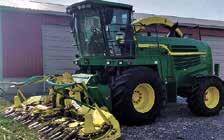
GRAIN EQUIPMENT
Good Selection Of Used Augers ................................... Call
MISCELLANEOUS
‘18 Bobcat Sweeperbucket 72” Model # 6707837, low usage............................................................... $4,900
Farm King Snowblower, single auger, hyd. chute 6’. $900 Merry Mac TPH-12 3pt Wood Chipper .................. $1,200
CHOPPERS
‘11 NH H7450 Discbine, Drawbar Hitch .............. $19,500
MF 2320 54” Mid-Mount Mower Deck .................. $1,100 Meyer 80” Skid Steer Mount Snowpusher, (Has Rubber Edge) ................................................... $900 Gehl 135 Grinder Mixer..................................... Coming In
Sure enough, that was about all it entailed. Row after row, we unearthed rocks and lled one trailer after another with them while a sunburn began forming a farmer’s tan on my arms. Occasionally, we encountered a rock too large to lift that we would ag and leave behind for the skid loader.
It blew my city-slicker mind that Pohlmann could recruit so many volunteers for a labor-intensive day of purging his land of rocks just for them to reappear the following spring like an invasive species. He told me there was no end in sight for the rock picking tradition, as technology had yet to produce a machine that could do the job as precisely as a group of humans.
After concluding work on a patch of land the Pohlmanns dubbed “rocky ridge,” we packed into a patch of shade under some trees near the elds. Then, while the volunteers enjoyed their choice of cold beer or water, I understood the silver lining to rock picking. Sure, it isn’t the most glorious work, but I couldn’t help but
feel satised while listening to the farmers exchange stories and laugh over memories while basking in the breeze.

Later in the day, when chatting with Pohlmann, I learned he had been picking rock with his family of 14 since he was only 6 or 7 years old. He said he and his siblings would even be hired out to neighbors needing extra hands each spring.
Pohlmann told me he could undoubtedly tell an experienced rock picker from an amateur, as he’d been doing it for almost six decades. While he did gather I was still getting the hang of things, he said I didn’t stick out like a sore thumb in the eld.
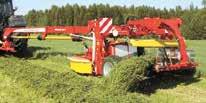



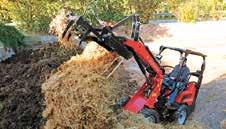

All things considered, I take that as a compliment. He added the group of volunteers was the best bunch of rock pickers he had in years.
For all farmers getting ready to rid their elds of large rocks this spring, stay hydrated and happy rock picking season.

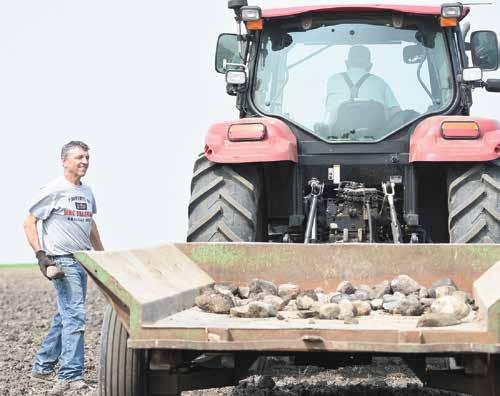








WAVERLY, Minn. – The Glessing family worked together May 12 with dual goals in mind – keep their dairy farm near Waverly humming while also preparing for and attending the Howard Lake-Waverly-Winsted High School’s biggest FFA event of the year.
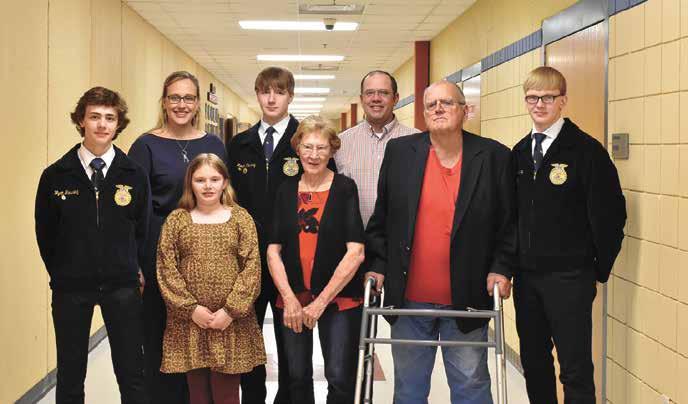


Each year the whole family looks forward to the sense of accomplishment and pride their FFA chapter’s banquet and awards program brings. This year was the chapters 59th year of the ceremony.

That morning began early with Wyatt Glessing in the barn by 6:30 to milk the family’s 80 cows in their tiestall barn. A junior in high school, Wyatt participates in a work program that allows him to work part of the school day at home. Helping him was David Glessing, who is a second cousin of Wyatt’s father, Dan, and has been helping on the farm since 2007. At the same time, Sharon Glessing, Dan’s mother, was nearby feeding calves and Dan was feeding ani-
Turn


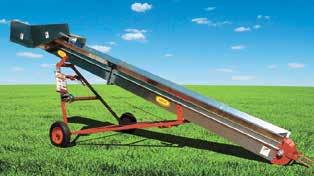
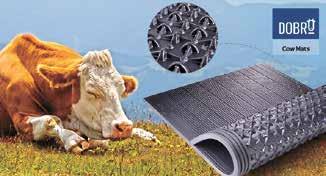
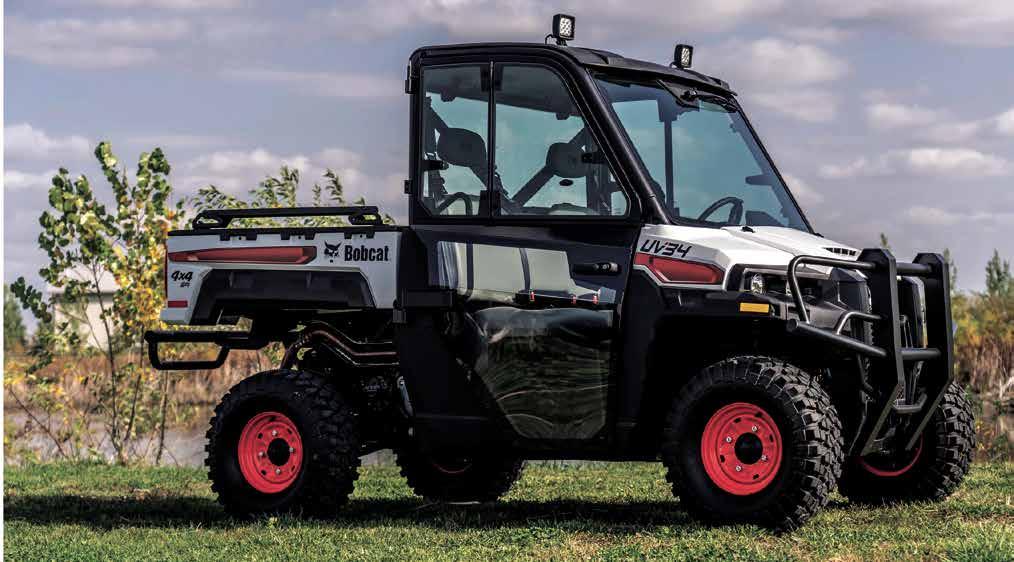

Scabbling makes a 2.5 inch wide groove that is rough on the bottom and sides. This gives your cow traction at ALL times!
Call us for ALL your slippery concrete needs!
References available.
We’ve been keeping your cows on their feet since 1987!!
Leon Smith 715-314-0388
www.SmithsofWisconsin.com

THURSDAY, JUNE 15, 2023
mals and cleaning out the freestall barn.
Dan’s wife, Seena Glessing, was already at Howard Lake-Waverly-Winsted High School in Howard Lake where she is the co-FFA advisor with Jim Weninger, who was Dan’s teacher.
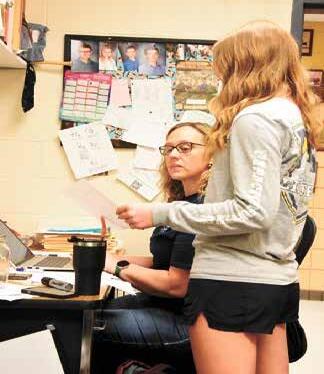
That morning, Seena needed to guide students as they started setting up for the night’s FFA banquet. She also needed to prepare for the ag classes she teaches. Between classes and after school, she helped set up the dining area, silent auction and everything for the awards program itself.
The Glessings’ other children – Tanner, Mason and Cora – attended their school day.
After chores, Dan focused on planting corn.
“We ended up putting in a few acres of corn, but the elds were tacky,” Dan said.
Later, David and Dan began the evening milking. Dan’s sons all helped, too, until they had to get ready for the banquet. The Glessings had a neighbor help nish chores.


PIPESTONE, MN
For more information phone: Of ce 507-825-3306 www.pipestonelivestock.com
“Thank you for helping when I was gone from the farm.”
With over 40 years experience, Wisconsin Silos is the most complete builder of concrete silos in the United States.


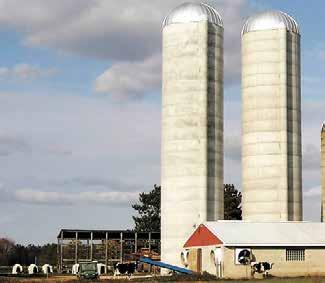
From pouring the footing, to xing the accessories, unloaders, feeders, conveyors, silo pipes, silo distributors & silo chutes.
WE DO IT ALL!
Meanwhile, Seena began greeting FFA alumni at 3:30 p.m., who were arriving to begin grilling pork chops. By 6 p.m., 200 guests arrived for the social hour and dinner.
On the Glessings’ farm, everyone, including Dan’s parents, rushed to get cleaned up and join Seena at the high school. Dan’s father, Allen, has attended every one of the previous 58 banquets and would not miss this one.
Dan was the last one to leave the farm and made it to the school at 7:30, just in time for the beginning of the awards ceremony.
“You are kind of used to it,” Dan said. “You juggle the schedules the best you can and get everybody where they need to be.”
For the Glessings, the juggling is worth it. Seena said her family’s participation in FFA has brought special memories, just as each FFA banquet does for their farming community.

“For one evening, everything pauses at the farm and the entire family shows up to celebrate our kids,” Seena said. “The strong backbone to agriculture in our communities shuts down and enjoys a meal together. It’s a pretty neat experience and shows the importance of this (FFA) program to so many.”
Having her own children in the program adds meaning.
“Our children have been raised in the ag room,” Seena said. “Through my job, I get to have a frontrow seat to my children’s experiences in the classroom and in FFA.”
- Leon Peplinski
Halli Poppler (from le�), Seena Glessing and Wya� Glessing go over prepara�ons for the Howard Lake-Waverly-Winsted FFA awards ceremony shortly before noon May 12 at the school in Howard Lake, Minnesota. Seena is co-FFA advisor with Jim Weninger.

Dan Glessing cleans the freestall barn during morning chores May 12 on the Glessings’ dairy near Waverly, Minnesota. Three genera�ons of Glessings were involved in morning chores – Dan’s mom, Sharon, fed the calves, while Dan cleaned the barn and his son, Wya�, helped milk.



GRACE JEURISSEN/DAIRY STAR








FFA reporter Dani Poppler (from le�), officer at-large Crystal Gunderson, president Wya� Glessing and vice president Halli Poppler gather outside of the high school May 12 in Howard Lake, Minnesota. All four FFA members live or work on local dairy farms in Wright County.


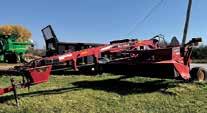
Dan Glessing does bookwork a�er visi�ng with a seed corn customer a�er milking May 12 at his family’s farm near Waverly, Minnesota. Glessing sells Gold Country Seed.
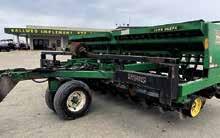




Next generation keeps farm alive
Previous to his son Dylan’s return home in 2016 to dairy farm full time, Scott Youngren had been milking 80 cows on his farm near Waverly, Minnesota. He housed 60 in a tiestall barn and switched 20 in and out by himself. Dylan’s joining the operation led to some upgrades and expansions on the farm. By 2018, the Youngrens were milking 122 cows in a 60-cow tiestall barn and housing half of the herd in a 60-stall freestall barn adjacent to the milking facility. Both father and son reported their system was working well.
Making a splash with conservation
Richard and Carolyn Young had been involved with the Minnesota Agricultural Water Quality Certication Program since it was rst piloted in 2014. As it does today, the program then helped farmers improve their land through conservation. In 2018, the Youngs milked 48 cows at their dairy near Plainview, Minnesota, and had begun implementing conservation practices such as planting cover crops every year. Both Richard and Carolyn said they had seen signicant improvement in the erosion on their farm since making those changes.
Kyle and Amber Tews had both grown up milking cows on dairies in Wisconsin, but they wanted to try another type of dairying. In January 2017, the Tews started milking 132 ewes at their farm near Orfordville, Wisconsin. The Tews quickly learned milking sheep is not the same as milking cows, but they adapted. Their farm’s milk
was sold to Landmark Creamery in Bellville to be made into artisan cheeses. The Tews articially inseminated the ewes at 7 months, and they freshened at 12 months.

The Colbensons stepped up to host the Pierce County Breakfast on the Farm after the original farm family had to step down after a family member experienced health issues. Tim and his wife, Shirley, and their four children – Brian and his wife, Felicia; Brandon and his ancée, Emi Trost; Ben and his wife, Danielle; and Breanna and her husband, Conner Sieracki – operated Ti-Shi Dairy where they milked 240 cows near Elmwood, Wisconsin. Tim said the breakfast would be good for dairy promotion and education.
Dealing with the dilemma of winter kill




Durst Bros. Dairy was among farms in the southern third of Minnesota that were hit by heavy winter crop loss. Ron Durst said it was the worst alfalfa winter kill he could remember in his career as a dairy farmer. The Durst family decided to plow up all 900 acres of their alfalfa elds near Mantorville, Minnesota, to start from scratch. Farms as far north as Cologne were affected by winter kill as well. On Durst’s farm, half to three-fourths of each eld were destroyed.
Carlson family named 2012 Kandiyohi Farm Family of the Year
Carlson Dairy LLP, established by Carlson ancestors near Willmar, Minnesota, in 1891, was going strong with Chad and Carl Carlson and their families now holding the reins. Together they milked 1,200 cows in a double-18 parallel parlor three times a day. The cows were housed in a 10-row cross-ventilated and sand-bedded freestall facility plus a new 6-row cross ventilation barn.
The families also farmed 900 acres of corn and alfalfa. Because of their involvement in dairy associations, promotions and education, including hosting many school eld trips on their farm, the Carlsons received recognition from the University of Minnesota Extension as the 2012 Kandiyohi Farm Family of the Year.
family finds
After starting a dairy farming career with 80 cows and a rented farm three years prior, Nathan and Bridget Gibbs were able to buy their own farm March 8, 2003, near Altura, Minnesota. With them came their baby daughter, Cora, and their herd, which had grown to 90 cows and 75 calves by then. On their new 160-acre farm, the couple milked in a double-6 herringbone parlor. Their willingness to take pay cuts when they gave up their previous jobs and their efforts to keep their overhead low in their farming practices allowed the couple to make their dairy dream come true.

The herd at Zeinstra Dairy near Holland, Minnesota, was one of the state’s top performers in 2003 in terms of dollar value of production according to the Minnesota Dairy Herd Improvement Association’s annual summary in 2003. This distinction came even though Mike and Lisa Zeinstra had been expanding their herd from 150 to 500 head through the previous ve years. With the expansion came an upgrade from a 60-head tiestall barn to a new facility with a double-10 parlor in 1999. In 2000, they had added on another 150 free stalls. The Zeinstras credited their good employees for their successful growth and herd production.




DUBUQUE, Iowa – This year’s in-person Four-State Dairy Nutrition and Management Conference will be held June 7-8 at Grand River Center in Dubuque. However, those not able to attend may register for an online recorded version of all large-group sessions. These include the pre-conference symposium, six plenary sessions, the breakfast and the question/answer sessions, and discussions that follow the main events.
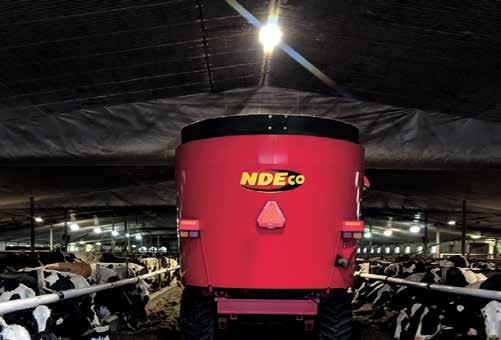

The recorded version was added after the conference went virtual during the coronavirus pandemic. Organizers said larger numbers of people from other countries were registering.
“When we moved to virtual for two years, we started picking up international participants,” said Jim Salfer, who is chairing the conference. “There are a lot of overseas participants that really like U.S. research. They really want to get their hands on U.S. dairy research but don’t necessarily have access to that.”
Salfer, who is a Minnesota Extension educator in the eld of dairy through the University of Minnesota, said sharing that up-to-date research is an important aim of the conference.
“One thing we’ve really tried hard to do is look throughout the world and see who really has the latest and the best research, and then we try to bring in those speakers,” Salfer said. “We’ve also tried to include more discussion with speakers and participants versus just have speakers speak and then have only one or two questions after.”
The conference, which has been recurring annually for over 30 years, is organized by Iowa State University and the universities of Illinois, Minnesota and Wisconsin. Throughout the years, attendance has remained steady.



“We’ve really been able to hold on to attendance even with decreasing herd numbers,” Salfer said. “We’ve stayed between about 525 and 585 participates.”
This year, large-group sessions on the rst day of the conference will

include presentations by Mike Steele and Eduardo Ribeiro of the University of Guelph, a research university in Ontario, Canada. Steele will share new ideas in prenatal and neonatal calf nutrition, and Ribeiro will discuss the economics of transition cow health. Another large-group session by Norm St. Pierre from Per-due Agribusiness will cover dairy nutrition that highlights, according to the conference ier, “goofy things we do in dairy nutrition that are penny wise and dollar foolish.”
Large-group sessions on day two will include a discussion about feeding in robotic milking systems led by Salfer and Marcia Endres. Endres is the director of graduate studies in the area of dairy cattle production at the University of Minnesota. Another session will be led by dairy producers Sam Fessenden and Jake Peissig, where they will share their robotfeeding strategies.
Each day of the conference also has a slate of six 45-minute breakout sessions, each running twice on the day it is scheduled. Topics include everything from improving pregnancy out-comes to postpartum ketones. This year, a contest was offered to graduate students by the four universities where the students gave threeminute oral presentations about their research. One of the breakout sessions on Wednesday will spotlight the winning students, who will share their presentations.
Phibro Animal Health Corporation is sponsoring the pre-conference symposium on the rst morning of the conference, focusing on strategies to improve prots. Presenters will cover the dairy economic outlook, pre-partum inammation, colostrum production and quality, and disease reduction in fresh-cow management.
Throughout the conference will be ample time for questions and answers, discussions, networking and socializing as well as a trade show and evening receptions.
“One of the things I really enjoy, and that I think participants really enjoy, is networking with people from outside of their immediate area and getting a pulse on the dairy industry,” Salfer said. “It’s important to have really great speakers, but it is just as valuable to visit with people from the whole Upper Midwest and to see how the dairy industry is doing and what producers in the area are thinking.”
For more information and to register, visit http://fourstatedairy.org/ or contact Salfer at salfe001@umn.edu. The conference registration fee is $175. Continuing education credits are available. You've
ST. PAUL, Minn. – The cheer of the crowd mixed with the ringing of cowbells at CHS Field as the St. Paul Saints scored a run. The cowbells were a gift at the gate for a number of lucky fans. The gift came in an Undeniable Dairy goodie bag replete with Undeniably Dairy chocolate- a-

vored lip balm for lips parched from cheering.
The dairy fun was all part of Midwest Dairy’s Dairy Night at the May 4 St. Paul Saints game.
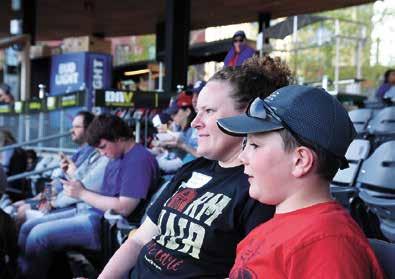
The event featured dairy promotion but also an opportunity for dairy farmers to celebrate together. Midwest Dairy invited dairy farmers and other partners to the game and hosted a pregame barbecue.

Amy Sauder, a dairy farmer at Alberts Brothers Dairy near Pine Island, sees the connections between the dairy community and baseball.
“We appreciate what the St. Paul Saints do to bring people together,” Sauder said. “It’s
just a festive time, and what we want to do as dairy farmers is … provide memory-making products.”



The game started with Rachel Rynda, 69th Princess Kay of the Milky Way, throwing out one of the ceremonial rst pitches. Besides Princess Kay, there were also three Midwest Dairy ambassadors representing the dairy community at the game.

Gracie Ash, one of the ambassadors, shared her perspec-




tive on the event.
“It’s truly just a night to network with everyone, for the dairy industry to come together and celebrate what we’ve done,” Ash said.
Attendees at the game saw a chocolate buttermilk drinking contest, a milk chugging contest on the big screen and an Undeniably Dairy-sponsored fan camera as well as heard a cheese-themed song and fun dairy facts as part of the in-stadium announcing.
Sauder appreciated the dairy information shared.



“It’s a dual-purpose event,” Sauder said. “We’re getting our word out. People are hearing … dairy products mentioned. Some of the fun facts they’re giving are just dynamite for us to get our message out at the same time.”
Besides throwing out the rst pitch, Rynda was part of

The Four-State Dairy Nutrition and Management Conference presents the latest research on issues concerning the dairy industry including feed efciency, calves and transition cows. This year’s conference will be held June 7-8 at the Grand River Center in Dubuque, Iowa.



The conference is a collaborative effort of Iowa State University Extension and Outreach, University of Illinois Extension, University of Minnesota Extension and University of Wisconsin-Extension.

Farmers Night Out: Calf Management is a program, offered by University of Minnesota Extension, focusing on dairy calf management. The program begins at 7 p.m. June 13 with a free meal, sponsored by GENEX, at Shady’s Hometown Tavern and Event Center, 451 Railroad Ave., Albany. A panel of calf managers will begin speaking at 7:30 p.m., and the evening will wrap up at 9 p.m.

Registration can be completed at z.umn.edu/FNOCalfMgt23 or by contacting Dana Adams at 320-204-2968 or adam1744@umn.edu. Deadline to register is June 9. The panel will include managers of individual hutches, automatic feeders and group feeders. The producers will share successes, areas of growth, tips and tricks.
A Dairy and Ag Outlook Seminar: Understanding a changing industry is from 9:30 a.m. to 3:15 p.m. June 14 at the Ridgeway Community Center, 690 County St., Ridgeway, Iowa. This seminar is sponsored by Iowa State University Extension and Outreach, the University of Minnesota Extension and the University of Wisconsin Extension.
For more information, contact Jennifer Bentley or Allie McIntyre at the ISU Extension and Outreach Winneshiek County ofce at 563-382-2949 or jbentley@iastate.edu and alliemc@iastate.edu.
The Precision Dairy Conference is June 20-21 in Bloomington, Minnesota. This in-person event will be a neutral space where many technologies come together to be discussed. Come and join us to learn from short talks and producer panels on how tech can help farmers improve environmental sustainability, labor management, animal health and welfare, and data integration for better decision making. For further information, visit precisiondairy.org.
Soil Health Academy: Transforming Your Dairy will be held June 20-22 in Cold Spring, Minnesota. In the SHA Dairy School, farmers will develop an understanding of regenerative agricultural principles and how they relate to their farm. Through a time-tested combination of hands-on and classroom programming, dairy farmers will learn how to apply the principles of regenerative agriculture to build soil, crop, forage, herd and nancial health to their farms. The event will be held at 25113 County Road 50, Cold Spring, Minnesota. Call 256-996-8742 or email info@soilhealthacademy.org for more information or visit https://soilhealthacademy.org/schools/transforming-yourdairy.
The West Central Research and Outreach Center will be hosting an organic dairy and swine day from 11 a.m. to 2:30 p.m. June 22 in Morris, Minnesota. Topics include substituting hybrid rye in a traditional corn-soy swine diet, organic hybrid rye production, feeding and grazing organic dairy cows, and pasture walks. Registration begins at 10:30 a.m. and lunch will be provided. The event is free of charge, but RSVP is requested. Participants can register by calling 320-589-1711 or emailing Brad Heins at hein0106@umn.edu.
4-H and FFA are hosting Ag Academy: Passion to Career June 22-24, a three-day, two-night camp for youth in grades 7-11 at Ridgewater College in Willmar, Minnesota. Youth will explore careers in agricultural and natural resource systems while experiencing a college campus and touring local industries. College professors and industry leaders will provide hands-on learning experiences on animals, communications, agronomy and more.
320-352-6303
Offering to dairy farmers from WI, IA, MN, SD & ND
We raise heifers post-weaned to 4 weeks pre-fresh. Heifers are individually weighed multiple times throughout their time at Prairie Dairy to monitor growth and performance. Monthly statements include: heifer inventory, breeding, & herd health information.
Included in our costs:


• Veterinary services & vaccination program


• Regular foot baths • Hoof trimming
• 3 pregnancy checks
• Nutritionist balanced ration


• Average daily gains over 2lbs per day/calving under 24 months
Prairie Dairy Inc.
Custom Dairy Replacements
Ed 920-960-8910




Jason 920-960-8921
Email: prairiedairy97@gmail.com Oakfield, WI
BouMatic’s revolutionary design of the TL Series liners is the next step for a more efficient dairy parlor. The specially designed tapered triangular barrel along with the round shoulder aids to keep the mouthpiece vacuum low. The tapering also keeps the touchpoint well below the teat end, effectively hugging the teat rather than pinching the teat. She will enjoy a consistent, even milkout from quarter to quarter, milking after milking.
And with our new lightweight shell we have the lightest unit yet! It will keep her comfort level high and the milkout time at an all-time low.
Give your herd the extra care they need for the life of your dairy. Request a free demonstration at BouMatic.com/Turbo

KUHN MM701 MERGER 24’ continuous merger CALL TODAY! (POTTER)

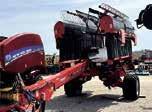


2023 H&S 6128 MERGERS, 28’ Continuous Head Merger, 3 IN STOCK, CALL BEFORE THEY’RE GONE!!! LANDOLL 7431VT, 26 Ft. Vertical Tillage Tool, Rolling Basket Harrow $40,000 (WATERTOWN)




the play-by-play broadcast in the press box. Rynda said her interviewer was originally from Los Angeles, California, so she shared what the Princess Kay program is and what she has done for events. She said he even wanted to know if she had any tips or tricks for milking cows.
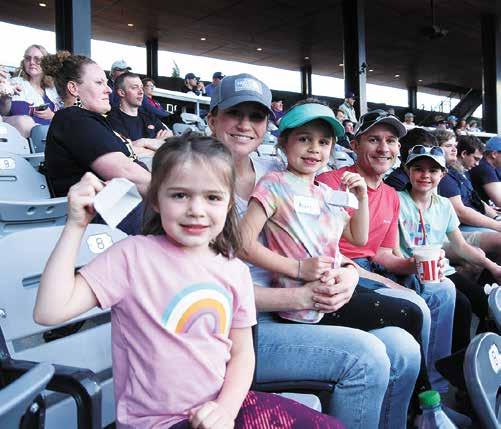
Dairy Night also honored dairy farmers and allowed them to spend time off the farm.
“There are a lot of families here,” Rynda said. “I know from my family that farming is what we’ve always done together, so to be able to go out and also have fun together is super important as well.”,
Melissa Klingsporn, a dairy farmer from Pine Island, said this was the rst baseball game her son had attended.

2016 MF 7726, 3,500 Hrs., CVT Trans, 4 Remotes, DLX Air Seat $124,900 (WATERTOWN)


2013 MF 7624, 180 Hp, CVT Transmission, Premium Package, New Front Tires - $115,000 (WAUPUN)

“I’ve been explaining to (my son) what’s going on,” she said. “He’s really excited when they strike out.”

Klingsporn sees an event like Dairy Night as tting in with Midwest Dairy’s continued focus on reaching the Generation Z audience who are consuming information from new places that are
different from where older generations look for news.
An email sent to Dairy Night guests prior to the event made this point as well.
“This event, part of a season-long campaign, will bring dairy fun, enjoyment and sustainability messaging to an adult Gen Z audience that’s largely disconnected from agriculture,” the email stated.

Looking toward the future of dairy promotion and as a member of Gen Z, dairy ambassador Ash said she expects to see dairy promotion focus on the whys behind what farmers do.
Valerie Sauder, a former Princess Kay nalist and current public relations professional, attended the event and shared similar thoughts.
“The future of dairy promotion is moving away from trying to educate the public and more (toward) communicating with them … why it’s our passion … and why it’s important to us,” she said. “Our culture is very value based, so nding the same values with people is more important.”
2002 NH TM120 9100 Hrs., SemiPowershift Transmission, 2 Remotes, $24,000 (WAUPUN)



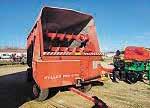


NEW MASSEY COMPACT TRACTORS, In Stock And Ready To Go! Cash Back Plus 0.0% For Up To 60 Months CALL NOW TO GET YOURS!



Polaris, Kuhn, Great






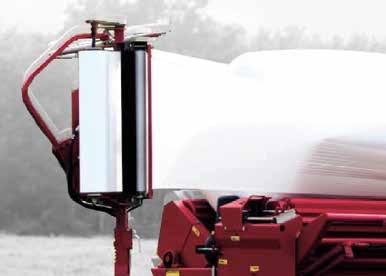






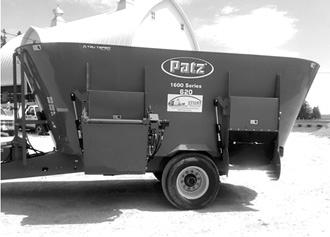

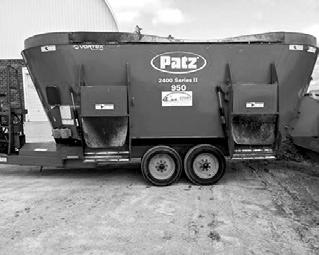





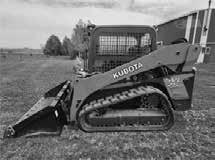

250 cows, 5,530 acres
40 cows, 250 acres

WAYNE ZIMMERMAN 80 cows, 85 acres


We farm 85 acres of land. We double-crop corn and triticale. We harvested the triticale May 9, chopped it and put it in the silo. We started planting corn May 12. The corn is already out and some has two leaves. It’s almost all corn and soybeans in this area. The earlier corn is 8 inches high. I would say 80% of the soybeans are planted, and the earlier planted soybeans are 2 inches tall. Most people plant the corn first and the soybeans last. The first-cutting hay in the area is in the silos. Most of that was made last week. Most farmers get five cuttings of hay a year. There is some wheat in the area that is done pollinating. It’s really dry in this area. We’ve had just 2.5 inches of rain since the first week of April. If we don’t get rain soon, the corn will be hurting. The first crop of grass hay is being mowed now. They are spraying the soybean fields around the area. There is not a lot of dairy in this area; it’s mostly cow-calf operations.

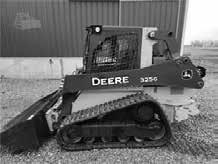
ANDREW INGVALSON


175 cows, 600 acres
We finished our manure about 10 days ago. We started on our corn May 16, and we finished today. We plant around 360 acres. The field conditions were good for planting. Most farmers in the area are wrapping up corn planting. I think there is quite a bit of soybeans going in the ground now. We plan to start hay next week; it’s close to knee high now. The pasture grass is coming pretty good right now, but we are pretty dry.
ALAN VANNURDEN



600 cows, 1,400 acres
We have 30 acres of corn to plant. We are hauling manure on that field; the rest is all in. We finished last Thursday (May 18). I would say three-fourths of the corn we planted is out of the ground. We are watering the new seeding alfalfa to get it going. All the hay in the area looks good. Most stands are 20 to 27 inches. A lot of the soybeans have poked through. Most people in the area are spraying or cleaning up machinery. We pick our rock before we plant.
The rain set us back. We are half done with planting durum and have started planting corn. We are done planting oats. The alfalfa looks pretty good, but we actually had a little frost five to six days ago; hopefully it didn’t stunt the alfalfa. We will probably start in a few weeks. Around here some of the bigger crop farmers are waiting to plant their corn. They have everything else planted. Our corn is always the last thing that we plant.
350 cows, 450 acres
We just started hauling our liquid manure. We were going to haul last week, but the fields were impassible because of the rain. Farmers in this area have been out of the field for 13 days because of the rain. Today (May 23), I see some tractors and planters going, but they are on sandier ground. Our hay looks really good, but we have to finish pumping; then we will start cutting. One of the neighbors is chopping hay today.
The pastures are looking great, but we could use some rain. The alfalfa also looks good, and we plan to start cutting it this week. We like to cut our alfalfa when it’s still young and tender so that we get top quality hay. The oats are doing nicely, the soybeans are coming up and the corn is about an inch tall.
LANE HETTINGA
130 cows, 75 acres
Our corn is all planted and is coming up. The emergence looks great. There are still a few guys in our neighborhood who are planting soybeans. We received a very nice rain over Mother’s Day weekend, and now the lawns and everything else is growing like crazy. The alfalfa grew about two feet during the past week and is now roughly 2.5 to 3.5 inches tall.
DOUG FAIRBANKS
380 cows, 600 acres
We have our spring planting done and have harvested our cover crops and our first-crop alfalfa hay. We applied manure and then planted behind our harvested cover crops. We finished this on May 23. Our area has been missing the rains and is very dry. Anything that is planted now that has not sprouted already will not come up if we do not get any rain. In our area, basically all of the spring planting is done except for what might be planted on hay ground or as after-cover crops. Lots of people are making hay in our area.
RICH HOUZNER
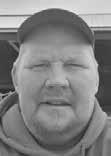




54 cows, 600 acres
The ground is getting plenty hard. The hay is there and looking pretty nice, but one nice rainfall would make it even better. We hope to start cutting first crop of hay this week. If the corn planting is not done by then, we will put it on hold and concentrate on getting the dairy hay put up. The rest of it is not as critical; the silos for the dairy cows are the priority. We are going to end up with close to 300 acres of corn, which is more than we originally planned for.
MITCHELL SCHAEFER
230 cows, 400 acres
We got all of our corn planted. We started May 12 and did the rest May 18. I think everyone in the area has their corn planted. We’re still waiting to do first-crop hay. We’ll probably cut it May 28. It’s getting dry now; we haven’t had much rain. It went from really wet to really dry. The water table is still high, but the surface is getting dry.
MATT REDETZKE


250 cows, 450 acres
We have had about 0.2 inches of rain, that was last week. It wasn’t really enough to slow anything down. We are done with our corn and should finish up our beans and new seeding today (May 24). We got our heifer and pack-barn manure hauled. We transfer our liquid manure into a larger pit and fallhaul our manure. We should be looking at starting hay next week. We don’t have any alfalfa, just a grass/clover mix. It all looks like it is shaping up pretty nice.
TIM VOSBERG
140 cows, 380 acres
Weather has been dry. We’re not complaining because we are getting crops done, but it is plenty dry. Our beans are all in, and I should finish planting corn today. The conventional guys are all cutting their hay. I’ll be starting my first crop tomorrow. We will chop the first crop and put it in bags. We have some hay down already for dry hay.

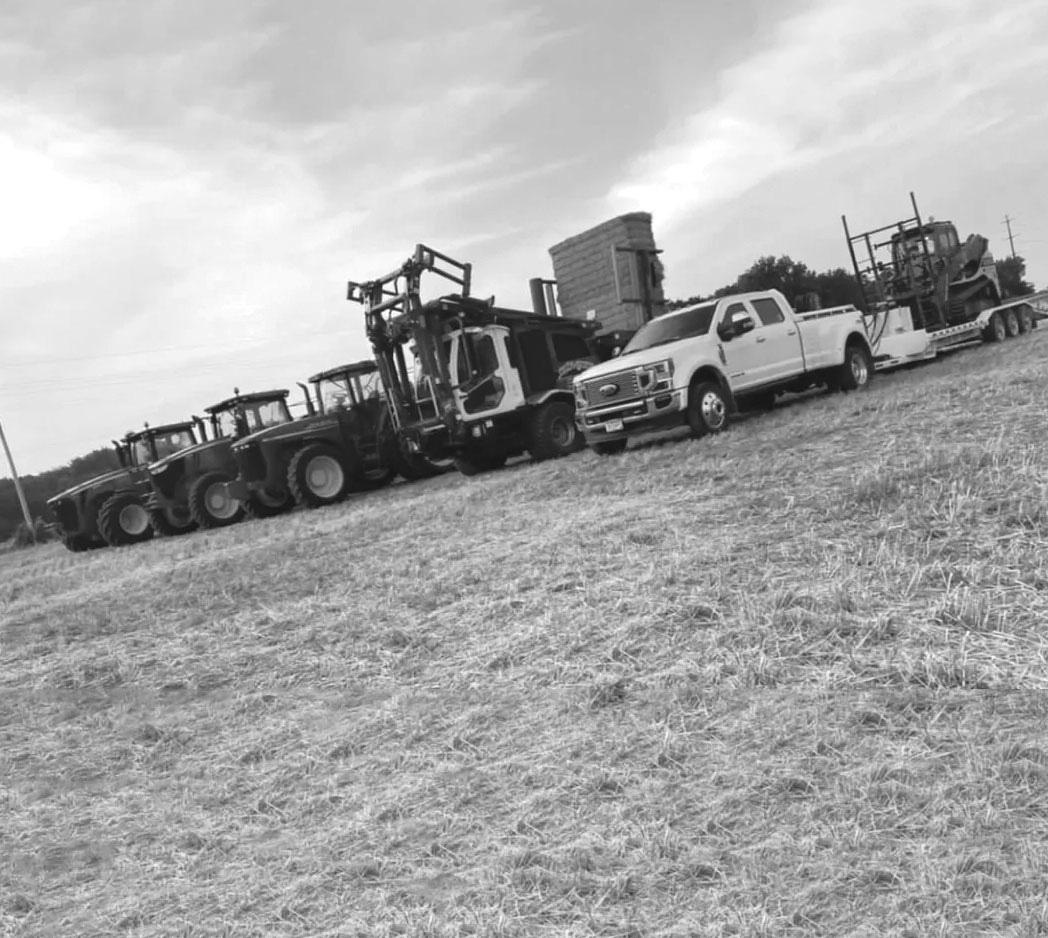
RON & COLIN
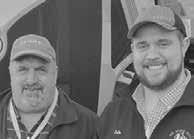
WUSSOW
100 cows.
1,400 acres
We have been planting around the clock the last two weeks. We should be able to wrap that all up in the next five days or so. We have all the beans and new seeding in. The earliest planted seeding is already to the second and third leaf and the beans are coming through. We started hay yesterday, so that put an end to the around-theclock planting. The hay looks good so far. What we have cut has pretty much been in the 24to 26-inch-tall range.
ALAN AINGER
300 cows, 1,100 acres
We had close to 2 inches of rain. We have 550 acres of corn planted. We started planting April 26-28 and continued May 4-7. We planned to go back in the field May 10 to finish up the last 50 acres and to start planting beans. The weather has been good, and planting conditions have been excellent. Everybody is making pretty good progress in the area. We’re looking at cutting hay the end of the week of May 15.
SALE DATES:
with hay/straw, baby calves, feeder cattle, replacement cattle, goats, sheep, hogs, fat and slaughter cattle
Fri., June 2 Dairy Sale - Noon

Tues., June 6 Feeder & Slaughter Cattle Sale with hay/straw, baby calves, feeder cattle, replacement cattle, goats, sheep, hogs, fat and slaughter cattle


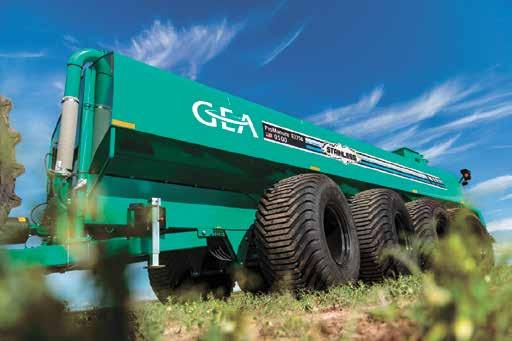










Fred Herdering plants corn for his son, Russ, May 16 near St. Rosa, Minnesota in Stearns County. The Herderings milk 75 cows, raise 450 hogs and farm 400 acres. The Herderings were planning to plant 130 acres of corn this year. Fred and his wife, Marlene, help on the farm daily.

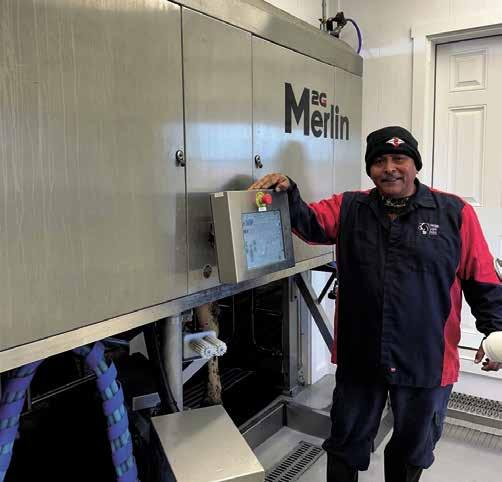







 By Danielle Nauman danielle.n@dairystar.com
By Danielle Nauman danielle.n@dairystar.com


FREDERIC, Wis. – Competing in the show ring is something Julia Owens has always enjoyed. She grew up showing her family’s registered Jerseys and, over the course of the last four years, has found a new passion in the arena of dog shows.
Earlier this month, Owens and her 4-year-old Tibetan mastiff, North Star’s Whiskey Glasses, traveled to New York City to compete in the 147th edition of the prestigious Westminster Kennel Club Dog Show, held May 8-9.

Whiskey was one of ve dogs of his breed invited by the Westminster Kennel Club to compete, with the remaining ve spaces in the class being open entries.
“Two dogs that were entered didn’t make it, so there were only eight in Whiskey’s group, four males and four females,” Owens said. “What makes Westminster a little different from most shows is that you start the competition as basically best of breed, with both males and females and all ages in the same class.”
The winner of that class then moves on to compete with all the other working dogs, with the winner of that round competing for best in show.
Owens and Whiskey met up in Illinois with a fellow exhibitor traveling from Colorado. Owens said traveling with a large-breed dog can be challenging at times. Like with showing dairy cattle, everything they do is restricted by the dogs and their needs.
“We might not have come out with a top placing, but we had a great experience, saw so many things and learned


so much in our quick trip to New York,” Owens said.

Owens works on her family’s 750cow dairy farm in Polk County as well as at a local veterinary clinic.
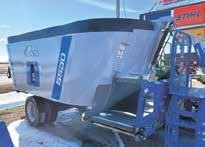
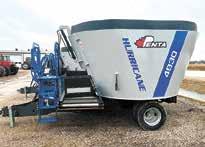



Entering the world of competitive dog shows was not on Owens’ radar when she purchased her rst registered dog, a Bernese Mountain Dog named Odie.
Having always wanted a Bernese Mountain Dog, Owens connected with a breeder in nearby Cushing and made the decision to purchase a puppy six years ago. A return visit to the same breeder set Owens’ path on a new course.
“She told me that Odie was really nice and I should consider showing him,” Owens said. “That is how I got started. I always tell people I just traded white pants for khakis.”
Something else happened during the same visit. Owens made the decision to get another puppy: Whiskey.
“I guess I would say I have my two bucket list breeds of dogs,” Owens said of her pair of show companions. “If I were to ever get another dog, I would consider a Borzoi. They are so graceful and uid. I really like the more unique breeds.”
It did not take Owens long to start seeing parallels and differences between the worlds of cow shows and dog shows.
“The best part of showing dogs is the people you meet, the friendships you make and the places you get to go,” Owens said. “You make so many friends that you only see at shows. There are so many beautiful and interesting dogs. There are the owner-handlers like myself, and there are professional handlers. There are so many things you can learn about the sport.”
Owens said keeping her dogs in show condition is not a terribly difcult task.

“They are couch potatoes, so they stay fairly clean,” Owens said. “I bathe them occasionally and blow their hair out with a blower that is a bit smaller than the Sullivan’s blowers you see at cow shows.”

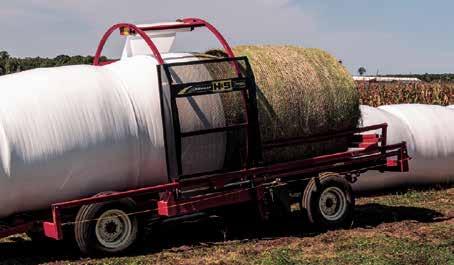



Like showing cows, show-day preparations include hair products, particularly in the two breeds Owens competes with, which both fall into the class of working dogs.
“The goal is to make them look as big and as imposing as possible,” Owens said. “My dogs use better hair products than I do.”

The breed standards for a Bernese Mountain Dog dictate their hair coat should be smooth and not curly. Owens said that if a Bernese Mountain Dog
has a wavy coat, every effort is made to blow the coat straight.




For Whiskey, the Tibetan mastiff breed standard calls for an imposing and noble look, a nod to the breed’s original purpose as royal guard dogs.
“My dogs’ personalities are a little different from their breed standards,” Owens said. “(Whiskey) loves everyone and wants to be everyone’s friend. Odie, on the other hand, is 110 pounds of chicken that barks.”
Owens has embraced the dog show life and, with her companions, has traveled around the U.S., attending qualifying shows and collecting points to earn champion titles. Whiskey obtained his champion title in 2021 and accumulated enough points to be awarded his grand


champion title in February 2022. Owens said 198 breeds are represented at Westminster and 200 at the AKC National Championships.
“It is neat to be able to say that I’ve shown on two of the biggest stages of both cow and dog shows – World Dairy Expo and the North American International Livestock Exposition for cows and now Westminster and the AKC National Championships in Orlando, Florida, for the dogs,” Owens said.



Whiskey, the Tibetan mas�ff, owned by Julia Owens of Frederic, Wisconsin, rests during the long car trip to the Westminster Kennel Club Dog Show held May 8-9 in New York City.
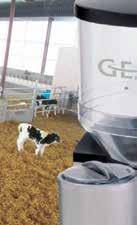














Hay sales starts at 12:30 p.m. and are the 1st and 3rd Thursdays of the months of September through May. June 1, 2023

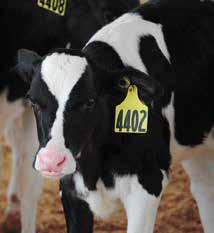

For more information, contact Kevin Winter 320-352-3803, (c) 320-760-1593 or Al Wessel at 320-547-2206, (c) 320-760-2979









4 cups spaghetti sauce, meatless
2 cups low fat Ricotta cheese


1 cup low fat cottage cheese
2 tablespoons dried parsley
1 teaspoon chopped garlic
6 ounces grated, part skim mozzarella cheese
3/4 pound uncooked lasagna noodles
1/4 cup Parmesan cheese
Preheat oven to 350 degrees. Spray a 9-by-13 pan with non-stick coating. Mix ricotta cheese, cottage cheese, parsley and garlic. Pour 1 cup spaghetti sauce in the bottom of the pan. Arrange 1⁄3 noodles in the pan so they touch but do not overlap. Spread half of the cheese mixture over the noodles. Top with a third of the mozzarella cheese. Top this with 1 cup of sauce, a second layer of noodles, the remainder of the cheese mixture and another third of the mozzarella cheese. Add another cup of sauce, another layer of noodles, another cup of sauce and the remainder of the mozzarella cheese. Sprinkle with Parmesan cheese. Bake, covered tightly with aluminum foil, for one hour. This can be put together and refrigerated prior to baking. Increase baking time by 15 minutes if it has been refrigerated.
1 package (16 ounces) frozen broccoli, carrots, cauliflower blend vegetables
6 tablespoons butter
1 red pepper, chopped
1/2 cup onion, chopped
2 cloves garlic, minced
1/4 cup flour
1/4 teaspoon nutmeg
1/4 teaspoon salt

2 cups milk
2 cups (16 ounces) ricotta cheese
1/2 cup Parmesan cheese, shredded

1 cup provolone cheese


3 cups cooked mostaccioli (1 1/2 cups dry, uncooked)

Preheat oven to 350 degrees. Spray an 8-by-12 pan with non-stick cooking spray or olive oil.
Thaw frozen veggies and drain well. Chop coarsely. Microwave butter in 1 1/2 quart bowl on high until melted. Stir in red pepper, onion and garlic. Microwave 3-4 minutes. Blend in flour, nutmeg and salt. Microwave 30 seconds. Stir in milk. Microwave for 5-7 minutes or until the mixture just boils and is thick. Stir every 2 minutes. In a separate bowl, combine ricotta, Parmesan and basil. In another bowl, mix mozzarella and provolone cheese. Arrange half the mostaccioli in a single layer in baking pan. Top with half of the white sauce, all ricotta mix, all veggies and half the mozzarella cheese and provolone cheese. Press down, top with remaining mostaccioli, sauce and mozzarella/provolone blend. Bake 40-45 minutes. Cover for first half hour, then uncover at the end to finish.
Filling:
1 small package vanilla instant pudding
1 cup small curd cottage cheese
1 cup vanilla yogurt
Mix together. Fold in 1 1/2 cups lite Cool Whip. Pour into crust. Add fresh fruit for topping. Refrigerate until serving.
DAIRY CATTLE AUCTION
Wednesday, May 31, 2023 at 11:00 am 2 Herds Pending at ad deadline. Watch our website for updates


June 6, 2023 at 11 a.m. EXPECTING 200HEAD!!!
DAIRY CATTLE AUCTION

Wednesday, June 7, 2023 at 11:00 am HERD DISPERSAL 80 Holstein Dairy Cows, including a few Jersey Cows. Milked in tie stalls. Cows averaging 70# 3.9F 3.0P 190SCC, not pushed. Over 50 years of AI breeding, currently through Select Sires. Vaccination program. Very nice gentle cows. Owner is retiring from dairy farming. Coming from Richard Steppe, Steamboat Rock, IA
NEXT SPECIAL SHEEP & GOAT AUCTION
Thursday, June 8th, 2023 at 10:00am

Looking for: Lambs 75-85#• Kid Goats 75-90#
Accepting Sheep and Goats 6-8pm Wednesday evening. Have all sheep and goats in by 9:30am Thursday morning! Overnight sheep and goats selling 1st.
Weekly Highlights at Premier
Another busy week at Premier Livestock and Auctions with over 2,500
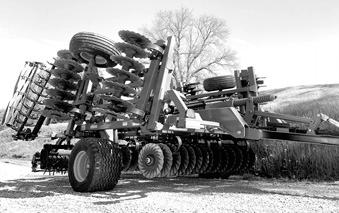
‘13 Mustang 2056 II, Case Ctrls, Dsl, 2150 Lift Cap, C&H, 2 Spd, 2,350 hrs ..................................$32,500

‘21 Mustang 1500R, H/F Ctrls, Dsl,1600 Lift Cap, C & H, 2,540 hrs, New Rims, Tires And Bucket, Warranty Expires At 3000 Hours Or 2/1/2023 ...........$32,500
‘18 Gehl RT165, JS Ctrls, 69HP Dsl, 15” Tracks, 2000 Lift Cap, C/H/A, 2 Spd, 950 hrs .....................................$44,900
‘18 Gehl RT165, ISO JS Ctrls, Dsl, 1650

Lift Cap, C/H/A, 2 Spd, 990 hrs .$47,500
‘22 Gehl V420, JS Pilot Hyd Ctrls, Dsl Eng, 4400 Lift Cap, Standard and HiFlow Hyd, C/H/A, 2 Spd, 5 hrsCall For Price ‘17 Gehl V270, ISO Ctrls, Dsl, 2700 Lift Cap, C&H, 2 Spd, 3,950 hrs$40,500
‘17 Gehl R220, H-Ctrl, Dsl, 2500 Lift Cap, C&H, 2 Spd, 2660 hrs .......$33,500
‘15 Gehl R220 T-Bar Ctrls, New 72HP Yanmar Dsl Eng, 2500 Lift Cap, C&H, 2 spd, 4025 hrs ...............$37,000


‘22 Gehl R220 T-Bar H-Ctrls, 2500 Lift Cap, C&H, 2 spd, 3890 hrs .......$38,800
‘17 Gehl R190, JS Pilot Ctrls, Dsl, 2100



Lift Cap, C & H, 2 Spd, 105 hrs .$46,000
Gehl 5640, T-Bar Ctrls, 2500 Lift Cap, C&H, 2 Spd, 3,450 hrs ..............$24,400
Gehl 4625, T-Bar Ctrls, 46HP Dsl, SS .............................................$11,900
‘20 Deere 330G, ISO Ctrls, Dsl, 3000 Lift Cap, C/H/A, 2 Spd, 1,650 hrs ....$51,000
Bobcat 763, H/F Ctrls, Dsl, 1500 Lift Cap, Single Spd, 3,600 hrs


Kuhn Knight PS150, 500 Bu Vert Beaters, New Apron Chains, New Beater Teeth ..........................................$35,250

H&S 310, 540PTO, 295/75-22.5 Tires$9,600
‘19 Hagedorn Hydra-Spread Extravert 5440, 540 Bu, Vert Beater, Hyd Push, Endgate, 4’ Rock Guard .............$46,000
Jamesway Vacu-Pump, 6” Transfer Pump, 11L-15 Tires, 540 PTO........$3,400
Houle 13, 1 3/8, 1000PTO, 13’ Depth .....................................$4,900
‘09 Kuhn Knight 8132, 425 Truck Tires, 3200 Gals .........................$25,500


Kuhn Knight 8132, Flotation Tires, 3200 Gal ....................................$16,250
‘12 NH Duratank 3400S, 49x19.0-20 Tires, 3400 Gal ...........................$16,500 NH S676, 540PTO, Selling As Is .................................$1,700
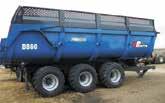
‘16 Balzer 8RLS, 30’ ......................$2,200
‘19 McHale V6750, 4x5.5’ bales, surface wrap, auto wrap, bale kicker, cutter rotor, 900 bales ..................$55,500

NH Roll-Belt 560, 2800 bales ........$44,500
‘15 Anderson Hybrid X, Up To 6’ Rd & 6’
Sq Bales, GX630 20HP Honda Eng, 4 Stretchers, Hyd Push Extractors, Bale Row Guidance, Large Fuel Tank, Self Propelled ...............................$26,500
‘16 H&S BW1000, 11Lx15 Tires, 6’ Bales, 13,500 Bales On Counter .. $24,900
‘19 H&S LW1100 Linewrap, Wrap 6’ Bales, at 2,800 For Bale Count................$31,000

Mahindra EMAX 20S HST, 20HP Dsl, 4WD, Hydro, 198 hrs, King Kutter And 48” Tiller Included ...$14,700
‘21 Manitou MLA5-60 H-Z, C/H/A 3 Spd w/Spd Ctrl, Bucket not included, 200 hrs ............................................CALL
Woods M5-4, 5’ Width, 3 point mount, Single Tail Wheel...........$1,250
Cabelas RC2072 Slip Clutch, 3 pt mt, 6’ Width, Frt & Rear Chains, Single Tail Wheel, Made By Woods ........................$2,900
Extreme 69” Brush Cutter, 11-20GMP ................................$3,250
Edge HB3 Breaker, skid loader mnts, Hyd breaker, 1pt ..............$4,500 Virnig Pallet Forks ........................$650
‘18 Grouser Tracks, 18 Pads, Fits JD 320G or Loader with a 44.2”
6160 Turbo Max, 600 CuFt, Turbo Paddle Reel, 4 Auger Power
Whl base, All new bushings and pins ....................................$2,300
Grouser 12” Tracks, Fits Cat 246B .............................$1,200
Tracks, Fits 2054, 10x16.5 Tires, Has Rubber Pads .....................$ 1,000
Farm King 72” Finish Mower, 3 Pt, Right Side Discharge ................$1,500
Westendorf 4300, Brush Cutter ..............................$1,200

JBM Bale Trailer, 8 bales ...........$3,700



Black Max, 22” Blower fan, 76”
Width, Hyd Drive with Skid Mts, 21-25 GPM Hyd Requirement ........................$3,800
TMG Industrial RT120, 540 PTO, 48”, 3 Pt ....................................$2,800
